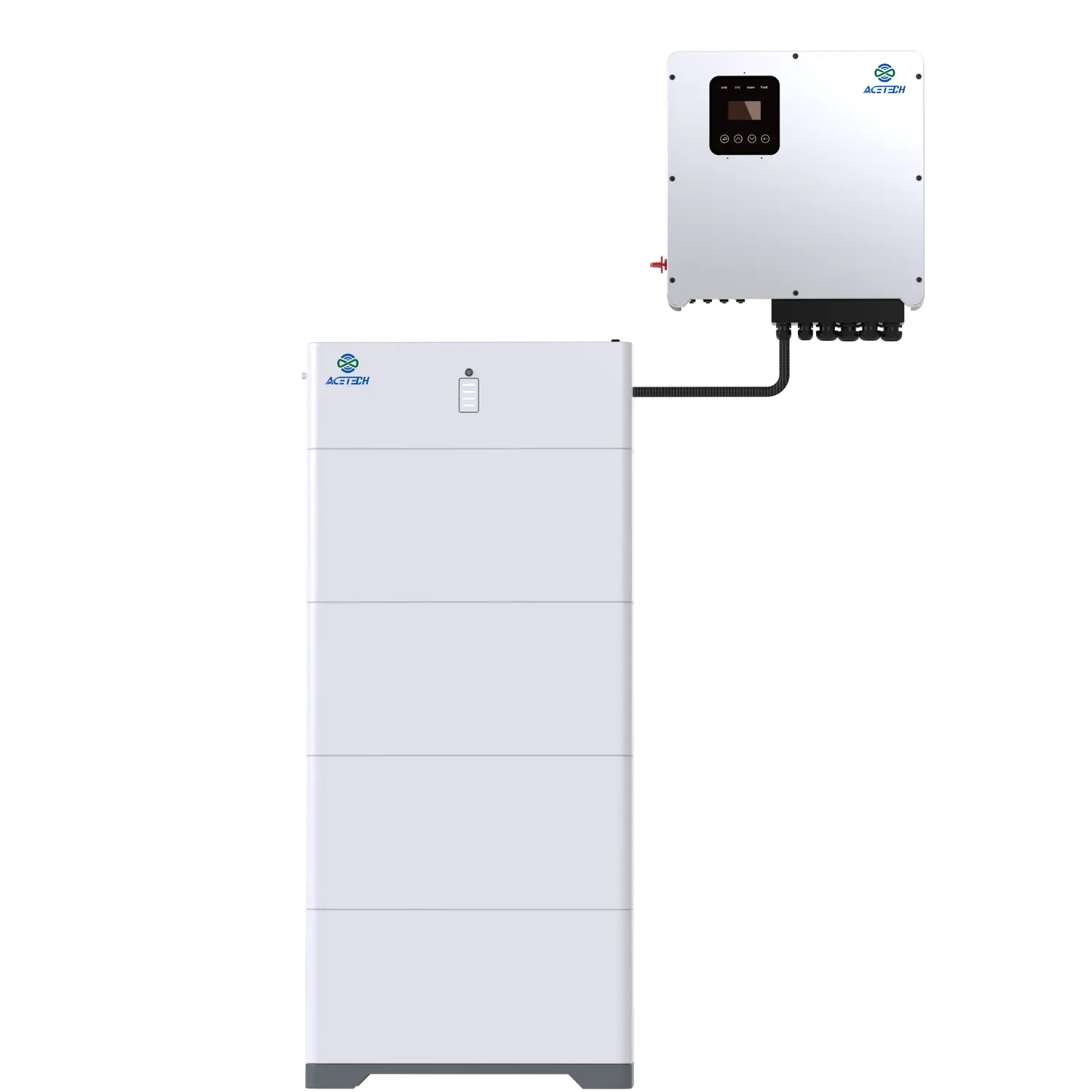
Inquiry
All-in-One Energy Storage System vs. Split Energy Storage System: Which One is Right for You?
Energy storage systems (ESS) are becoming an essential part of modern homes, especially for those using solar power. But with so many options available, how do you choose the right one? The two main types—All-in-One Energy Storage Systems (AIO ESS) and Split Energy Storage Systems (Split ESS)—each have their own advantages and drawbacks.
In this guide, we will explore their key differences in detail, providing expert insights to help you pick the best energy storage system for your home. Curious which one fits your life? Keep reading!
What is an All-in-One Energy Storage System?
An All-in-One Energy Storage System combines the battery, inverter (which converts stored electricity into usable power), and charge controller into a single unit. This design makes it easy to install and use, making it a popular choice for homeowners who want a hassle-free energy solution.
What Are the Benefits of an All-in-One Energy Storage System?
✅ Easy installation: Pre-configured and "plug-and-play," reducing setup time. For example, a typical 5kWh All-in-One system can be installed in just 30 minutes, making it ideal for small apartments.
✅ Space-saving: A compact design that minimizes the footprint, ideal for small homes and urban apartments.
✅ Lower upfront cost: Generally, All-in-One systems are more affordable initially compared to Split ESS. According to EnergySage, the average cost of an All-in-One system in 2024 is around $5,000, while a Split system can cost up to $8,000.
✅ Simple maintenance: With all parts integrated, troubleshooting and servicing are straightforward, requiring fewer separate diagnostics.
What Are the Drawbacks of an All-in-One Energy Storage System?
❌ Limited scalability: Hard to upgrade or expand storage capacity without replacing the entire unit.
❌ Potential overheating: Since all components are housed together, heat accumulation may affect performance over time.
❌ All-or-nothing repairs: If one part (such as the inverter) fails, the entire unit may need repair or replacement.
What is a Split Energy Storage System?
A Split Energy Storage System consists of separate components—a battery, inverter, and charge controller. This setup offers more flexibility, allowing users to customize and expand their system as needed.
How Does a Split Energy Storage System Save Money Long-Term?
✅ Greater scalability: You can add more batteries or upgrade the inverter as your energy needs grow. For example, a homeowner in California who expanded their solar panel system was able to double their battery capacity with a Split ESS without replacing the original inverter.
✅ Better heat management: Separate components allow for better airflow and cooling, making it more reliable for high-power applications.
✅ Customizable: Users can select different brands and models for each component, ensuring the best fit for their specific needs.
✅ Longer lifespan potential: If one component fails, only that specific part needs replacement, reducing overall system downtime and long-term costs.
What Are the Downsides of a Split Energy Storage System?
❌ Higher initial cost: Purchasing separate components can be more expensive upfront.
❌ More complex installation: Requires professional installation and careful system configuration to ensure compatibility.
❌ Takes up more space: Since the battery and inverter are separate, more physical space is required for installation.
Side-by-Side Comparison: All-in-One vs. Split Energy Storage Systems
| Feature | All-in-One ESS | Split ESS |
|---|---|---|
| Installation | ✔️ Simple, plug-and-play | ❌ Requires professional setup |
| Space Requirement | ✔️ Compact design | ❌ Needs more space for separate components |
| Upfront Cost | ✔️ Lower (~$5,000) | ❌ Higher (~$8,000) |
| Scalability | ❌ Limited | ✔️ Highly expandable |
| Maintenance | ✔️ Easier, but entire unit may need replacement if one part fails | ❌ More complex but allows individual part replacement |
| Heat Management | ❌ Less efficient due to integrated design | ✔️ Better due to separate units |
| Customization | ❌ Fixed setup | ✔️ Can mix and match components |
| Typical Use Case | Small homes, apartments | Large homes, businesses |
| Lifespan Expectation | 10-15 years | 15-20 years |
Which Home Solar System is Right for You?
Choose an All-in-One System If:
- You want a simple and quick setup: If you prefer a hassle-free, pre-configured solution that is easy to install and requires minimal technical knowledge, an All-in-One system is a great choice.
- You have limited space: If you live in a small home or apartment where space is a premium, the compact design of an All-in-One system will be a better fit.
- Your budget is tight: If you are looking for a cost-effective solution with a lower initial investment, an All-in-One system typically has a more affordable price compared to Split ESS.
- You don’t plan to expand your system: If your energy needs are stable and unlikely to grow significantly in the future, an All-in-One system provides a sufficient and cost-effective solution.
Choose a Split Energy Storage System If:
- You need flexibility and scalability: If you plan to expand your solar panel capacity or add more battery storage over time, a Split ESS allows you to upgrade individual components as needed.
- You have high energy consumption: If your household uses a lot of energy, particularly if you have electric vehicles or high-powered appliances, a Split ESS is more efficient in managing increased loads.
- You prioritize long-term cost savings: While a Split system has a higher initial cost, it allows for part-by-part replacements and upgrades, making it a more cost-effective option in the long run.
- You want better performance in high-demand scenarios: If you need a system that performs well under heavy loads or continuous use, a Split ESS provides better heat management and system longevity.
How to Evaluate Your Energy Storage Needs
Choosing between an All-in-One and a Split system depends on several factors:
Your energy consumption – If your household uses a lot of energy or you plan to add electric vehicles or more solar panels in the future, a Split system may be better.
- Available space – If you have a small home, an All-in-One system’s compact design may be the best choice.
- Budget – If you need a lower upfront cost, an All-in-One system is more budget-friendly.
- Future expansion plans – If you want the option to expand your battery capacity, a Split system offers more flexibility.
Final Thoughts
Both All-in-One Energy Storage Systems and Split Energy Storage Systems have their strengths and weaknesses. If you’re looking for convenience and simplicity, an All-in-One system is a great choice. However, if you want flexibility, scalability, and long-term savings, a Split system may be the better investment. Before making a decision, consider your budget, energy needs, space availability, and long-term plans.
Looking for a Custom Home Energy Storage Solution?
At ACE Battery, we specialize in customized residential energy storage solutions that meet your unique needs. Whether you need a compact All-in-One system for easy installation or a Split system designed for scalability, our expert team can help. Contact us today to explore custom energy storage solutions that fit your home and future energy needs! Get in touch now!
Our expert will reach you out if you have any questions!

